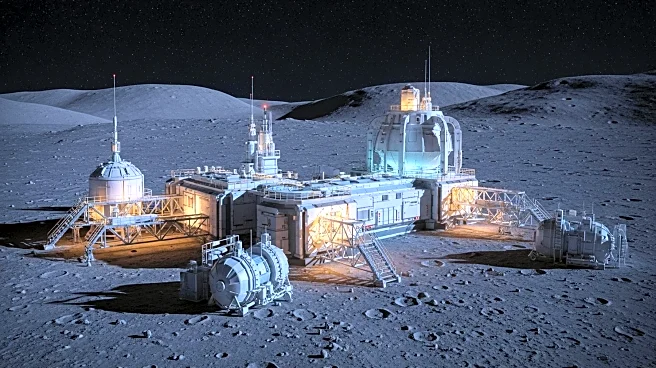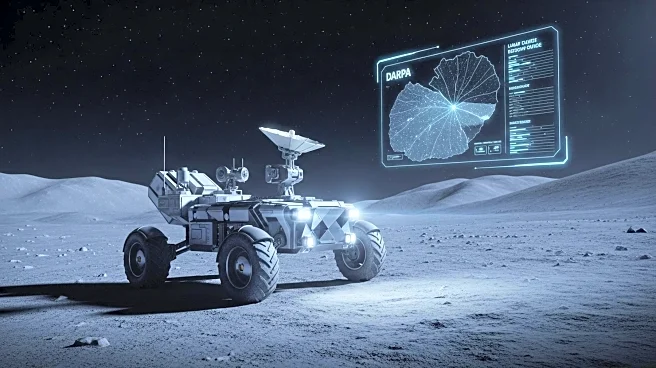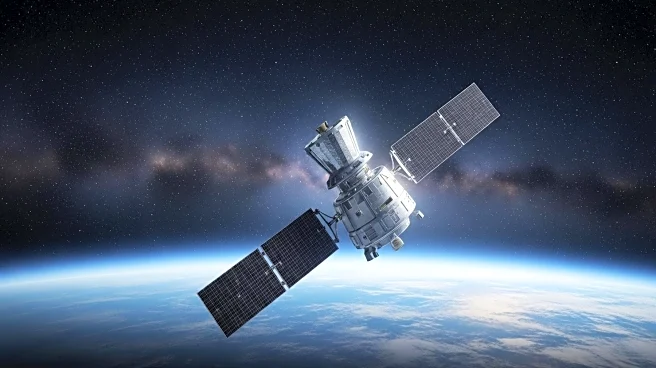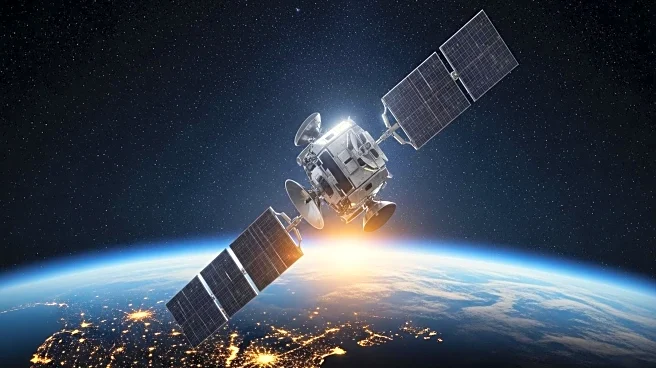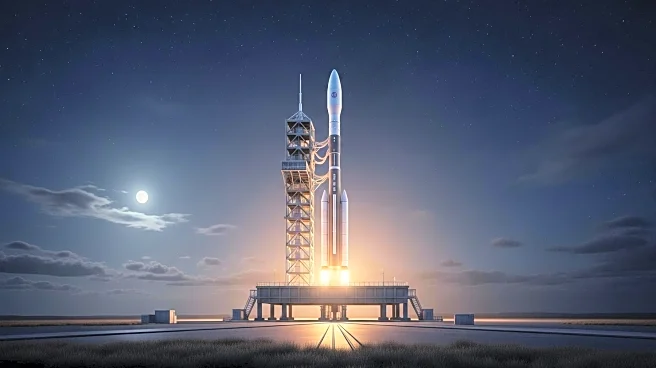What's Happening?
The U.S. Defense Advanced Research Projects Agency (DARPA) is spearheading efforts to establish economic activity on the moon through its LunA-10 initiative. This 10-year blueprint aims to create scalable lunar infrastructure and unlock the moon's economic potential. A new document, 'The Commercial Lunar Economy Field Guide,' outlines foundational technology concepts for off-Earth economic development. The guide, published by Air University Press, features contributions from over 130 authors, detailing ways to create self-sufficient, monetizable services for future lunar buyers and sellers. Key challenges identified include space insurance and managing the moon's temperature swings, which are crucial for sustaining commercial operations beyond sunlit hours.
Why It's Important?
The development of a moon economy could have significant implications for U.S. industries and global economic dynamics. By establishing a commercial ecosystem on the moon, DARPA aims to incentivize private-sector participation, potentially leading to advancements in mining and resource extraction. This initiative could position the U.S. as a leader in space commerce, fostering innovation and creating new markets. However, the economic viability of moon resources, such as rare-earth elements and platinum group metals, remains uncertain. Success in this venture could drive technological advancements and create new opportunities for economic growth, while failure could highlight the challenges of off-Earth commerce.
What's Next?
DARPA's LunA-10 initiative will continue to explore the feasibility of moon mining and resource extraction. The agency is also working on the Lunar Assay via Small Satellite Orbiter (LASSO) program, which aims to conduct low-altitude, high-resolution measurements of lunar resources. These efforts will help determine the commercial value of the moon's subsurface and guide future investments. As DARPA and its partners push forward, they will need to address technical challenges and gather more data to assess the economic viability of lunar resources. The success of these initiatives could pave the way for a sustainable lunar economy.
Beyond the Headlines
The ethical and legal dimensions of moon mining and commercialization are complex and could lead to international debates. Establishing property rights and regulatory frameworks for lunar resources will be crucial to prevent conflicts and ensure equitable access. Additionally, the environmental impact of lunar mining must be considered to preserve the moon's natural state. As the U.S. and other nations pursue lunar economic activities, collaboration and diplomacy will be essential to navigate these challenges and promote peaceful and sustainable development.

